In 1922, Mashbir completed a dangerous mission in Vladivostok, Russia, preventing the outbreak of a regional war between Japan, China, and Russia, which might have expanded further!
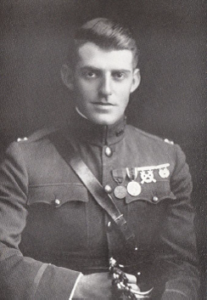
The following year on September 1, 1923, the most destructive natural disaster in modern Japanese history occurred, The Great Kantō Earthquake (関東大震災, Kantō daishinsai), a Japanese natural disaster in the Kantō region of the island of Honshū. This earthquake destroyed Tokyo, the port city of Yokohama, surrounding prefectures of Chiba, Kanagawa, and Shizuoka, and approximately 140,000 people died. During the challenging first months following that major disaster, Mashbir spearheaded an American Medical Relief Effort to assist many of the injured Japanese – As part of this humanitarian process, Mashbir created the first English – Japanese Medical Translation Dictionary that was used by English speaking health care workers while treating Japanese speaking patients.
The Great Kanto Earthquake, dramatically threw Japan back into a state of political and social instability. The Emperor and the Spy historical novel reveals Mashbir’s involvement during these dramatic events.
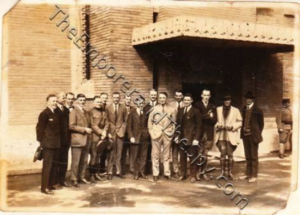
The above November 10th, 1923 photo is labeled: The Volunteer Workers American Relief in Japan
Mashbir (fourth from the left) led this group immediately after the Great Kanto Earthquake. These were the first relief workers to coordinate a major rescue/medical response to this major disaster. Mashbir and his team’s altruistic efforts were gratefully appreciated and remembered by the leaders of Japan. This picture was taken approximately two months after the earthquake, once things had been gotten under control, with Mashbir and his team proudly standing in front of the Imperial Hotel, Tokyo, after a job well done. The back of this photo is presented below.
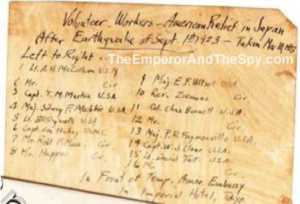
Most of these volunteers’ names listed below:
1- Lieutenant A. H. McCollum, U. S. Navy
2- Unnamed civilian
3- Captain T. M. Martin, U.S. Army
4- Major Sidney F. Mashbir, U.S. Army
5- Lieutenant Dillingsworth, U.S. Army
6- Captain Joe Hickey, U.S. Marine Corps
7- Robert F. Moss, a civilian
8- Mr. Harper, a civilian
9- Major Edward Witsell, U.S. Army
10- Reverend Ziemans, civilian
11- Colonel Chas (Charles) Burnett U.S. Army
12- Unnamed civilian
13- Major P. R. Faymonville U.S. Army
14- Captain W. J. Clear, U. S. Army
15- Lieutenant David Tait, U. S. Army
16- Unnamed civilian
Side note: Who would have thought when this photo was taken, it would be almost a century later that this never before publicly seen photo would be shared over the world wide web, honoring these volunteers’ heroic efforts.
The backdrop for the above group photo, the Imperial Hotel, was Frank Lloyd Wright’s architectural masterpiece. It was one of the very few large structures not destroyed by the earthquake. Due to the vast destruction throughout Japan, this hotel was temporarily used as the American Embassy.
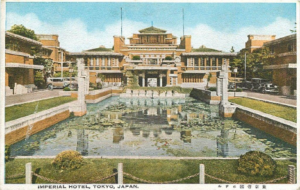
A 1920’s postcard photo of the Imperial Hotel.
Captain Sidney Mashbir realized that language barriers would get in the way of English speaking emergency health care providers from being able to communicate with and assist the injured Japanese who spoke only Japanese, so he cleverly created an English to Japanese / Japanese to English Medical Translation Dictionary to better facilitate the treatment of these injured Japanese during the traumatic aftermath of the Great Kanto Earthquake; further below is this 24 page bilingual medical dictionary.
It was republished in 1942, by the then Colonel Mashbir, probably to assist in the treatment of Japanese prisoners of war, who needed U.S. medical treatment. That conflict which Mashbir had devoted his efforts to prevent between the U.S. and Japan during the 1920s and 1930s, regrettably, could not be avoided. The below medical dictionary honors Colonel Mashbir’s altruistic intentions towards the Japanese, and it might also served as a template for an updated version for today to assist in medical situations involving English / Japanese translation while taking a patient’s medical history and to better understand the patient’s current symptoms/injuries.
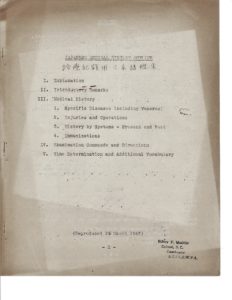
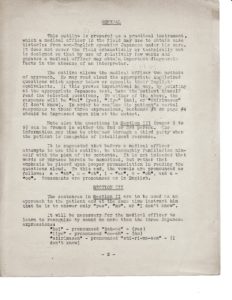
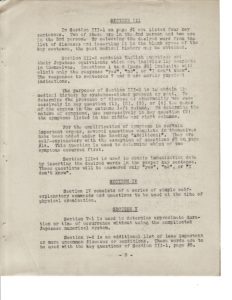
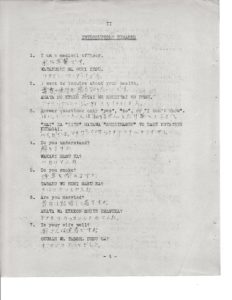
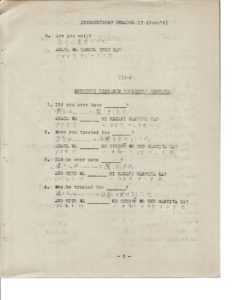
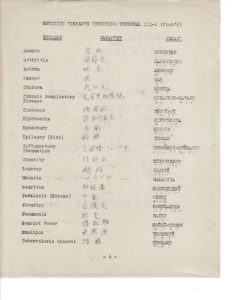
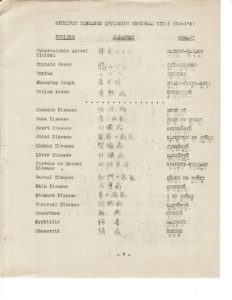
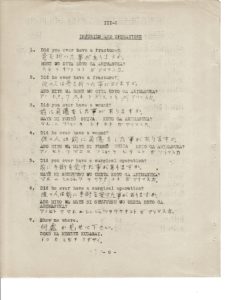
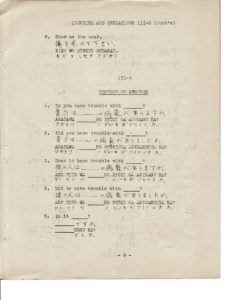
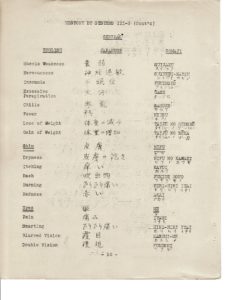
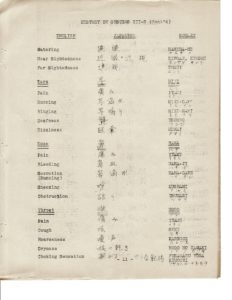
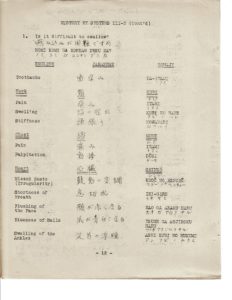
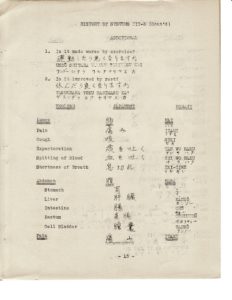
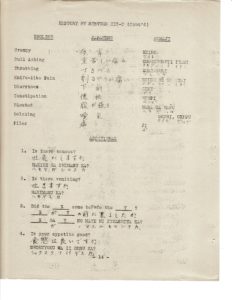
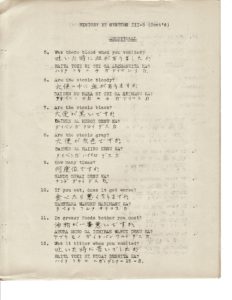

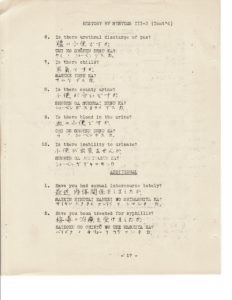
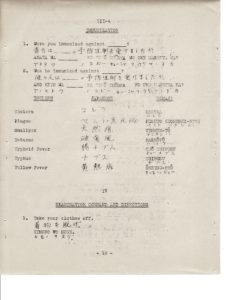
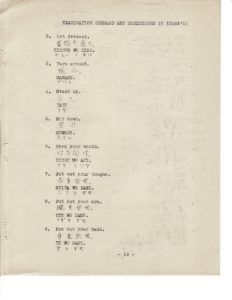
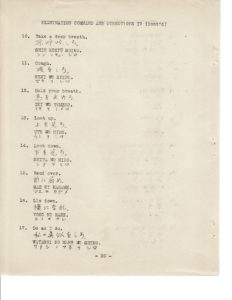
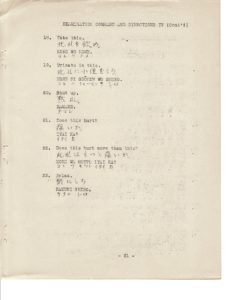
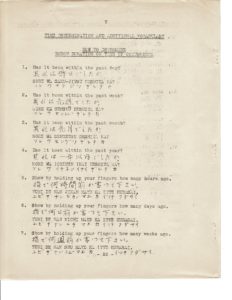
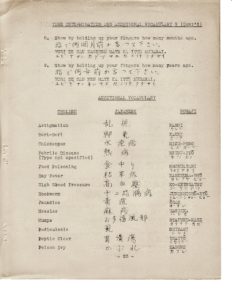

Leave a Reply